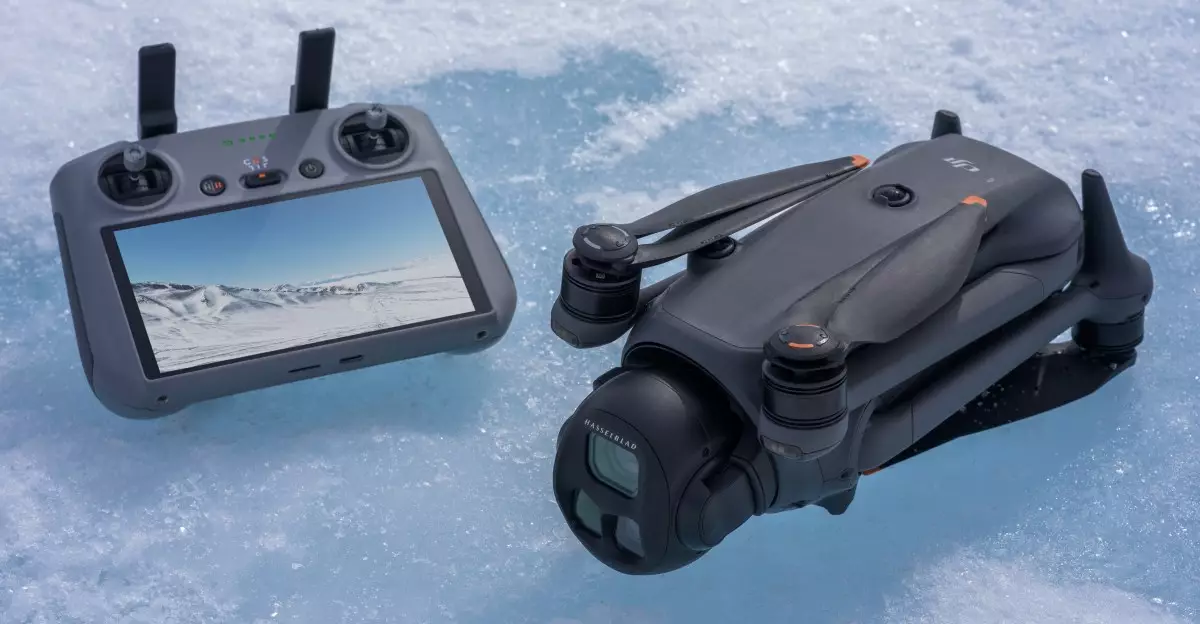In the world of consumer drones, the DJI Mavic series has consistently set high standards in aerial photography and videography. With the introduction of the Mavic 4 Pro, anticipation has skyrocketed among enthusiasts and professionals alike. Surprisingly, the drone hit the shelves at U.S.-based retailers such as Adorama and B&H, despite DJI’s initial decision to skip a U.S. launch due to complex tariff and shipping implications stemming from the geopolitical climate. Interestingly, these retailers had a limited stock that was expected to vanish rapidly, raising eyebrows in the tech community.
As consumers scoured for the latest in drone technology, the fact that Adorama offered the Mavic 4 Pro at $2,699 (and even more expensive configurations for additional features) was met with astonishment and excitement. This unexpected turn of events demonstrated the lengths to which retailers would go to cater to a market eager for cutting-edge technology, even when corporate decisions suggested a lack of availability.
Behind the Curtains of Market Logistics
It’s evident that there’s a grey area surrounding the logistics of drone imports and sales in the current climate. According to B&H, while they were offering pre-orders, there remained uncertainty regarding when the stock would actually land. This admission underscores the complexities that drone retailers face, exacerbated by international trade relations and tariffs. Miguel Perez of B&H emphasized that they were wary of taking payments until the product shipped, a prudent approach given the ambiguity surrounding availability.
The scramble by Adorama and B&H to deliver the Mavic 4 Pro raises intriguing questions about how large retailers manage inventory and the influence of consumer demand on their decision-making. It paints a picture of a market that thrives on immediacy; even a few hundred units can create a frenzy among eager buyers.
Consumer Curiosity and Price Sensitivity
The pricing strategy surrounding the Mavic 4 Pro also provides insight into consumer behavior. The Fly More Kit and the Creator Combo—priced at $3,549 and $4,649 respectively—highlight the allure of enhanced features for serious drone users. It’s apparent that buyers are willing to invest significantly in technology that promises superior performance, showcasing the principle of value over cost. The presence of the DJI RC Pro 2 controller adds another layer of enticement, showing that consumers are keen to pay a premium for enhanced control and handling.
This dynamic reflects broader economic trends where technology enthusiasts are often at the forefront of tough purchasing decisions. In this case, the choice presented to argue against DJI’s initial exclusion from the U.S. market seems to have spurred a wave of urgency. As stocks dwindled, it became a race against time for customers—an exciting yet anxiety-inducing prospect that mirrors the fervor of limited-time releases in the consumer electronics realm.
The Implications for Future Drone Launches
The unexpected presence of the Mavic 4 Pro in U.S. stores signals a potentially transformative moment for drone sales and consumer electronics. It raises critical questions about DJI’s strategy moving forward: could this event pave the way for more accessible launches of their products in the U.S.? If retailers can successfully navigate the complexities and restrictions currently on the table, it could prompt other international companies to rethink their approach to market entry.
Additionally, the discourse surrounding the Mavic 4 Pro underscores a fundamental aspect of technology—we live in an age where consumer demand often forces corporations and retailers to adapt quickly. In a space defined by innovation, agility will likely remain a crucial trait for companies hoping to satisfy a growing base of tech-savvy consumers.
This scenario not only highlights the blurring of lines regarding product availability but also reflects a burgeoning excitement for advancements in drone technology. As conversations continue to unravel about availability and market strategy, it’s clear that both consumers and retailers are eager to embrace what the future holds for aerial innovation.

